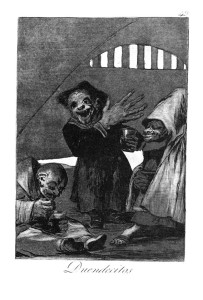Creatures of the Night: Goblin
This is the fourth entry in “Creatures of the Night Season 2.”
In this season of fright, mysterious trouble makers are resurfacing from the underground. Dashing through the night, their only purpose is to cause mischief and mayhem, stirring up trouble for their unsuspecting victims. The Goblin has a mysterious history through several cultures, where in each the creature seems to find a new purpose and variation of dastardliness.
The Goblin is largely a creature of Germanic and British folklore, and is believed to be evil, or at least mischievous. It is said to live in dark places, usually caves and forests, and spends most of its time terrorizing local children who happen to wander too close for its liking. Many scholars believe that such creatures came out of the interest in paganism. Specifically, this theory focuses on paganism mysticism’s belief in nature, spirits, and magic.
Many cultures have their own Goblin myth. Typically though, Goblin are said to be of small to medium height and can range anywhere from a dwarf to human size. They are also known to have the power of invisibility, to aid in their mischievous deeds.
Some legends even attest to Goblins having the ability to weave nightmares and place them into people’s minds. They have also been known to steal both children and women and lock them underground, never to be seen again. Others tell of the Goblin stealing human babies in the middle of the night and leaving ugly goblin babies or changelings in their place. Goblins have also been known to have such vicious smiles that they curdle blood.
In England, the Goblin is known according to folk lore as the Red Cap. The creature is said to inhabit old ruins and castles. The Red Cap waits in the castle for weary travelers to stop in looking for somewhere to stay for the night. After its guests are seemingly safe and warm, the Red Cap murders them and dyes its cap with their blood. The Red Cap must constantly be in the business of trapping travelers, otherwise its hat could dry out and it could die.
Another legend of the Goblin comes from Greece, where they are known as the Kallikantzaros. These creature spend a majority of the year underground, where they spend their days sawing at the World Tree. This process consumes much of their time and when the tree falls it is on December 25. So, from Christmas until about January 6th the Kallikantzaros are free to roam the earth and do as they please. Once the season is over, along with the winter solstice and the sun begins to brighten the earth for longer periods of time, these creatures must run back to their home underground. There they begin the process of sawing for another year and wait for their chance to come back to the surface.
Goblins have been and will continue to be a part of literature and pop culture for many years to come. In this spooky season, make sure to not leave any room open for the mischievous Goblin or any of his merry pranks.











